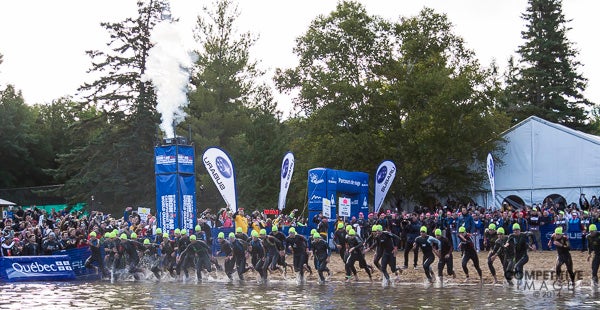Why Following A Pro's Example Isn't Always Best

Photo: Paul Phillips/Competitive Image
When preparing for an Ironman, following a pro’s example isn’t always the best idea.
I wonder if someone watching my career, when I was still racing professionally, ever said, “What an idiot!” I’m sure they did, because increasingly, I find myself saying the same thing about the professional athletes racing today. I suppose this indicates that I have truly become that washed-up “old fogey” about to spout off with the cliché, “Back in my day …”
I just can’t help but wonder what is going through many of the professional triathletes’ minds today when they are planning their race schedule. When did it become common practice to race a 70.3-distance race two to four weeks before a full iron-distance race?
Do they really expect to race well at the 70.3, recover and then perform their best at the iron-distance race too? Do all the professionals today just train that much harder, recover that much quicker, and are simply that much tougher than the athletes from my generation and before? I really don’t think so, because actually pulling off two great races that close together is a very rare feat.
It used to be the norm that when an athlete was preparing for an iron-distance race, they would put in a solid six to eight weeks of training. Around five to six weeks out, they would possibly race an Olympic-distance event simply as part of their speed training.
Sure there are the anomalies. Craig “Crowie” Alexander had some amazing performances with short windows between races. However, this is CROWIE I’m talking about—one of the greatest ever. There are others too—Leanda Cave, Sebastian Kienle and plenty of Brett Sutton’s athletes, but many of these pros are on the planned fast track to success followed by burnout. Most don’t intend to have 15- to 20-year careers so they can gamble big. Still, why do most pros today think they can pull off the same coup?
Possibly, it’s simply because they see other pros do it, and think it is the secret to performing well at the second race. If you are thinking, “Well, Craig did it, so can I.” My response to you is this: “You’re not Craig. No one is.”
RELATED: Why Are So Many Professional Triathletes Racing Into Their 40s?
They may also think they need a key workout like a 70.3 to be ready for a full a couple weeks later. From my experience, four weeks out from an iron-distance race was always my biggest and most important training. Two weeks out, I was in the middle of my taper recovering from said training. No way did a half-iron-distance race fit into that equation. The physical toll of a half-Ironman is definitely not appreciated by the pros today. It’s not an Olympic-distance race—half-Ironmans actually require recovery!
The Kona Points Ranking (KPR) system has definitely changed the way athletes set up their schedules too. Possibly, they feel by stacking races like this, they have a better chance to earn points from one training block. This is a flawed plan because, most likely, they will only perform decently at one of the races. The training for a 70.3 and a full Ironman are very different and not interchangeable. I have to think performing poorly, or at best average, at two races is worse than focusing on that one great race result. Even with the chase for points, it is still possible to schedule a season that allows plenty of time between races. Then they can actually train for both distances instead of compromising both.
My big fear for all of this has nothing to do with the professionals. If they want to over-race, perform poorly, shorten their careers and end up injured by stacking races, that’s fine. However, I worry that the age-groupers will follow their lead and think this is a good way to plan their seasons too. Don’t! This is definitely not one of the times to “do what the pros do.” Plan a season with a couple of peaks and plenty of time for training, taper and recovery afterward.
But what do I know? Now that my career is over, I think I can hear all the youngsters telling me I don’t know what I’m talking about.
RELATED: How Tough Is The Hawaii Ironman?
Tim DeBoom is the 2001 and 2002 winner of the Ironman World Championship, and the last American to win in Kona.